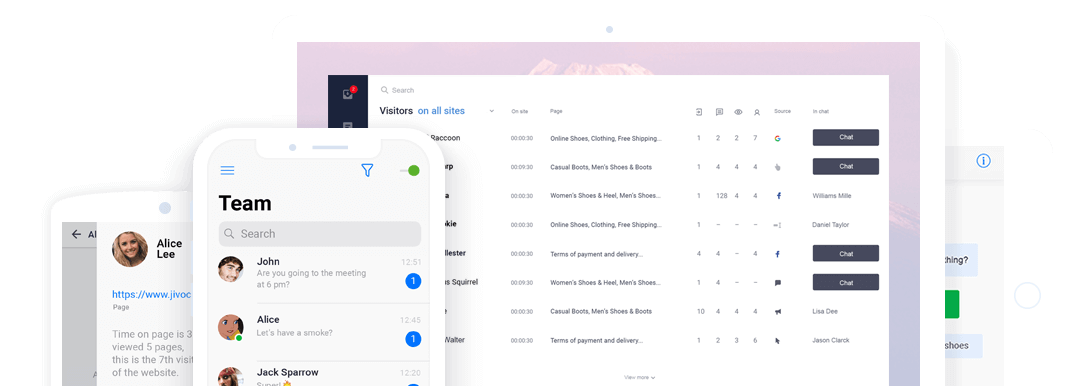
Getting your messages over to your clients, customers, service-users or customers-to-be is a complicated beast these days. The different communications channels open to you each have their particular uses for specific purposes; certain messages are best directed down certain channels.
Navigating your way through this omnichannel environment is a fulltime job for some, and it’s made so by the fact that many of the people that, as businesses we wish to talk to, hop from one channel to another, seemingly at will. Four years ago or so, Neil Mohan, Google’s VP of display advertising said 90 percent of consumers start a task on one device but end up finishing it on another. Today, people change device and medium.
Here at TechHQ, we’ve considered three suppliers of software that help organizations engage in this multi-channel environment – see below – so as a prelude to that, here are a few aspects of the available channels that need considering.
SMS – the venerable old man of mobile communications, text messages are almost always opened by recipients (in around 98 percent of cases), but they can’t contain rich media such as logos (MMS capabilities cannot be assumed to be in place). This channel, then, isn’t good for brand awareness, but as a way of touching base, such as sending delivery updates. They make customers feel valued and informed.
(Keep your eyes peeled for RCS – the successor to SMS being touted by Samsung & Google, among others.)
Apps and push notification – if you’re lucky enough to have an app, or access to one (marketplace apps, for example), then there’s already a degree of buy-in from your customer, client or partner. Push notifications can be timed for specific times associated with, for instance, leisure or business decisions, so can be highly effective.
Websites – rich media, animations and video are superb ways to get your messages across. Depending on your targeted demographic, you can assume that the audience is using a mobile device to interact with your organization. If that’s the case, long and complex web forms to capture text input are not ideal. Conversely, if your offering is business-oriented, you can assume the recipient is at his or her desk, with a traditional keyboard to hand.
Facebook Messenger and Twitter DM – personalization is the buzzword of the moment, and social messages are an important conduit to help guide your audience to where you want them to be. Clearly, choice of platform is important, but more so is the need to assure your individual target is not being subject to blanket ‘junk’ messaging.
Voice – when only human interaction will do, or when there are issues in customer care that need unpicking by a human operator. Incoming or outgoing voice calls are great, and overall customer experience can be greatly improved by equipping call centre personnel with both the customer’s history, but also the ongoing strands of communications started and continuing on other channels.
Email – a great platform for rich messages, and still a trusted favorite both of senders and recipients. Automation is fairly easy to achieve, and personalization is becoming easier with dynamic content drawn from other channels and databases containing from previous interactions’ contents.

Social media – choice of platform is an interesting subject, and is affected by target demographic, current fashion, the product or service about which you wish to engage, and geography. A few examples give a clue to this area’s inherent complexity:
- Instagram & Twitter: de rigeur for the younger demographic (for now), but messaging on the former needs consideration for visual aesthetics.
- Facebook: these days for an older demographic, but timing of messaging needing careful consideration.
- Fashion: where’s the next ‘big thing’? Many say Snapchat, but significant business presence here may drive audiences.
- Geography: if your organization wants to connect to mainland Europe, or APAC, you’ll need to be conversant with Line, KaKao, Weibo (for Asia), or WhatsApp for Germany and France.
- B2C channels: specialized platforms designed for businesses to interact with consumers, such as Facebook Messenger for Business, WhatsApp Business, and (soon) Apple iMessage for Business. Cross-platform integration is built in, enabling customers to see or receive a link, and chat immediately with the organization after a single tap.
Orchestrating campaigns or maintaining personalized relationships on different channels is complex, but thankfully there is a marketplace that offers omnichannel communication management platforms. Here your organization can explore the possibilities available to it in order to control ingoing and outgoing comms on all channels. By pulling together the threads into one dashboard, a single data point or source of truth can inform the organization of the individual’s history, preferences, and ongoing communications– and therefore their potential.
Whether you’re looking to integrate one of the platforms available into an existing system such as a CRM, via an SDK or APIs, or need an out-of-the-box omnichannel communications management platform, we recommend you begin your search with one of the following three suppliers:
Organizations wishing to test the waters with omnichannel communications may wish to start with Comapi’s CPaaS, a cloud-based prebuilt platform that, like good online services, just works. But those with more resources or existing systems can also deploy the company’s platform as a standalone, or as a a full integration into legacy apps.

Source: Comapi
For the technically capable, there are SDKs and APIs, so bespoke integrations can be crafted– and Comapi’s support teams are very happy to aid this process in any way they can. The low-code set-up means that you can be up and running in short order, personalizing your messages and pushing up the levels of customer satisfaction and throughputs very quickly.
The company’s products let any organization talk and interact with their customers or service-users across just about any channel, all from one centralized interface. The solution means that from a customer’s point of view the call center operator will know the their history and will be automatically up to speed with the latest dealings and communications. Additionally, the customer need not necessarily have to authenticate their identity on every interaction – though for sensitive service activities such as those involving finance, that can be mandated.
The company’s expertise and sound technological basis is recognized by companies like Apple and Google, who involve Comapi with beta testing of new channels before they reach larger audiences– allowing customers to talk to their favourite brands using Apple iMessage’ being one example.
This means that as new channels find traction in a market, Comapi’s users will be able to hit the ground running, with no new APIs to wrestle with, and the heavy lifting already done by the UK-based company. You can read much more about Comapi here.
This German company offers an online chat platform, and does it very well– with, some might say, a level of detail that’s pushing the envelope. Simple elements like colourizing chats on a website are givens, but the platform allows as much customization for the organization’s staff as it does its customers.

Source: Userlike
Staff can choose, or be assigned to specific teams, or chat channels, so specializations always get deployed to the right customer queries and engagements.
Userlike also offers a range of ‘bots, which can contact operators if the remit of the pre-programmed bot is exceeded. For instance, if there’s a complaint or a complex enquiry, the bot can alert staff to step into the chat seamlessly, without the customer having to switch channel, to a phone call, for instance.
The platform integrates with common platforms and channels that are specific to certain markets: Trivago and TripAdvisor spring to mind as an example, but the platform will also aggregate mainstream chat channels too, like WhatsApp and Facebook.
The platform offers powerful insights into customer behaviors but will also report on the number of chats processed, on what channels, and by whom, so service centers can carefully tweak their provision according to channels favored by customers.
Perhaps the best way to get in touch with Userlike would be through their website’s online chat portal– although we’ve heard they also pick up the phone too!
Jivochat knows that depending on your territory– or the territory of your service-users, customers or soon-to-convert customers – the chat channels you’ll need will vary. The company’s platform plugs seamlessly into any organization’s website, its Facebook page and messages, email accounts, voice call systems, the increasingly popular Telegram and (in some markets) still-nascent Viber.

Source: Jivochat
Your agents’ own app, either on mobile, Mac or PC, or web dashboard, aggregates all messages, meaning that you can contract out message processing to as many discrete agents as you need. This is particularly important to cope with peaks in demand, such as Black Friday, Singles’ Day in Asia, or Boxing Day sales in the UK, for example.
Jivo offers a Business Phone service, which means that organizations don’t need a PBX system, as the software can route voice calls to the same agents as handle text chats from many channels. There’s call forwarding and multiple numbers available (this is a VOIP service so software runs the infrastructure), plus a callback feature so you can deploy voice from skilled operators within seconds when required.
Jivo’s platform can be fully integrated with other systems that you may already be using, via APIs, plus for bespoke integrations into applications and existing frameworks, there are a series of SDKs, plus support for those pathways, too.
As your company expands, Jivo ‘speaks’ English, Spanish, Portuguese, German, Turkish, Indonesian, Nigerian and Russian, so you can push into new territories without having to hunt round for new platforms as your business priorities develop and evolve.
*Some of the companies featured are commercial partners of TechHQ








